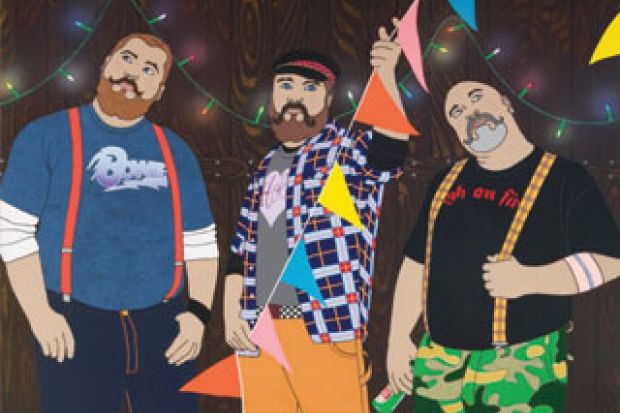Modern Western gay identity has worked hard at desirability. Stereotypes of previous eras contain enough sadness, shame and tragedy to fill a well of loneliness. This legacy has resulted in a reverse discourse – or a compensation narrative, depending on your point of view – where everyone, as Tom Robinson sang, is now glad to be gay. But those of us who are old enough will remember that Robinson’s voice was filled with dark irony, and that gay life remains hard work.
Gay men are under intense pressure to perform like so many Duracell bunnies at the gym, building smooth and muscular bodies for the society of the spectacle. Young gay men have become icons of modernity, their bodies sculpted, moisturised and sweet-smelling. Through symbolic and real labour, this type of gayness has become aspirational. I live in Brighton near the park that hosts Pride, and every August I see thousands of these men streaming past. I feel a mixture of pleasure in their achievement and concern at the pressure underlying such physical perfection. In order to escape shame, gay identity has polished up masculinity. This has been in many ways wonderful to see, but there are downsides. What if you are middle-aged and not just chubby but downright fat? Then see how your gay capital dribbles away.
The subjects of Jason Whitesel’s book, which grew out of a doctoral thesis, are members of Girth and Mirth, a Midwestern American social club for big gay men. Despite his confessed anxiety about groups (which makes his choice of PhD subject an interesting one) he spent nearly three years executing a painstaking ethnography of their world, attending their bar nights, kaffeeklatsches, restaurant outings, pot-luck dinners, holiday bashes, pool parties, game and movie nights, and weekend retreats. This is immersive research, and his thick description of big gay men’s lives is carefully wrought.
Whitesel is reflective about his role as ethnographer, and about the fact that because he is thin, many of the big gay men place him as a “chubby chaser” and tease him accordingly. He presents his subjects with respect and affection, and delineates his own path through their reality with appropriate circumspection.
In scrutinising the lens of stigma and shame through which these men are seen, he argues that society’s fat phobia, along with its homophobia, carves wounds on to their psyches. Such injuries stimulate strategies of reparation and connection. He provides us with details of two of the group’s main annual rituals: the frankly carnivalesque Super Weekend at a motel in a gay resort in the Southwest, and the highly respectable Convergence at a hotel in Minneapolis. Whitesel distinguishes these two dates in the big gay calendar through the prism of class: whereas the working-class tenor of the Super Weekend involves down and dirty play, Convergence focuses on attendees’ social betterment through cultural tours and such.
In this account of big gay men reinscribing their desirability, Whitesel adds to the sociology of sexuality, class and embodiment. It is a welcome divergence from the many representations of gay men that reduce them to (often mindless) Adonis stereotypes, and it is warmly recommended to all would-be ethnographers.
Fat Gay Men: Girth, Mirth, and the Politics of Stigma
By Jason Whitesel
New York University Press, 192pp, £50.00 and £13.99
ISBN 9780814708385 and 724125
Published 18 August 2014





